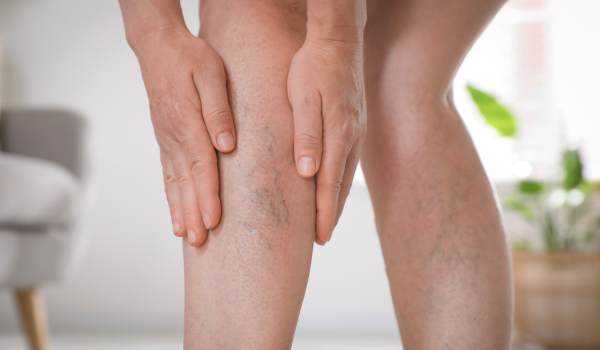.png)
Overview of Both Conditions
Venous stasis and deep vein thrombosis (DVT) are two distinct yet closely related circulatory conditions. While both involve the venous system and often affect the lower limbs, they differ significantly in causes, symptoms, risks, and treatment. Understanding the difference is essential for accurate diagnosis, proper intervention, and prevention of serious complications like pulmonary embolism or chronic venous insufficiency.
Let’s break down these two vascular issues to better understand what sets them apart—and how they’re connected.
What Is Venous Stasis?
Venous stasis refers to the slowing or stagnation of blood flow through the veins, particularly in the legs. It is often the result of malfunctioning vein valves or weak vein walls, which allow blood to pool instead of returning efficiently to the heart.
Key features of venous stasis include:
-
Sluggish circulation
-
Swelling in the lower legs or ankles
-
Skin changes such as discoloration or dryness
-
Feelings of heaviness, especially at day’s end
-
Long-term risk of ulcers or varicose veins
It is typically a chronic, progressive condition and forms one of the three components of Virchow’s Triad, which outlines the factors contributing to clot formation.
What Is Deep Vein Thrombosis?
DVT is the formation of a blood clot (thrombus) in a deep vein, most commonly in the legs. The clot may partially or completely block the vein, impairing blood flow and increasing the risk of potentially fatal complications if the clot travels to the lungs (pulmonary embolism).
Key features of DVT include:
-
Sudden leg swelling (often on one side)
-
Pain or tenderness, especially in the calf
-
Warmth and redness over the affected area
-
Visible superficial veins
-
Possible fever or elevated heart rate
Unlike venous stasis, which develops gradually, DVT can occur suddenly and requires immediate medical attention.
Underlying Causes
While both conditions involve venous dysfunction, their root causes differ.
Causes of venous stasis:
-
Prolonged sitting or standing
-
Aging and valve degeneration
-
Obesity
-
Pregnancy
-
Chronic heart failure
-
Prior vein injury or surgery
Causes of DVT:
-
Prolonged immobility (e.g., long flights, bed rest)
-
Major surgery or trauma
-
Clotting disorders (inherited or acquired)
-
Cancer and chemotherapy
-
Hormonal therapy or birth control pills
-
Smoking
Though venous stasis can contribute to DVT formation, DVT often occurs independently due to more acute risk factors.
Symptoms Compared
Venous stasis symptoms are typically chronic and gradually worsen, while DVT symptoms are more sudden and localized.
Venous stasis symptoms:
-
Chronic swelling in both legs
-
Skin itching, dryness, or hardening
-
Mild discomfort or heaviness
-
Discoloration (brown or red patches)
-
Slow-healing wounds around the ankles
DVT symptoms:
-
Acute pain, usually in one leg
-
Swelling that comes on quickly
-
Warmth and redness
-
Tightness or cramping in the calf
-
Shortness of breath (if clot travels)
DVT symptoms require immediate evaluation to prevent life-threatening complications.
How They’re Diagnosed
The diagnostic approaches for venous stasis and DVT differ, though both often start with a physical exam.
Diagnosing venous stasis:
-
Patient history and symptom evaluation
-
Doppler ultrasound to assess blood flow
-
Venography or MR venography (in complex cases)
-
Observation of skin changes and edema
Diagnosing DVT:
-
Duplex ultrasound (first-line test)
-
D-dimer blood test (detects clot breakdown products)
-
CT or MR venography (for pelvic clots)
-
Wells Score (risk assessment tool)
Prompt imaging is critical for DVT to confirm clot presence and location.
Complications to Watch
Both venous stasis and DVT carry risks, though their complications vary.
Complications of venous stasis:
-
Chronic venous insufficiency (CVI)
-
Skin ulcers (especially near ankles)
-
Recurrent leg infections (cellulitis)
-
Reduced mobility and quality of life
Complications of DVT:
-
Pulmonary embolism (PE)
-
Post-thrombotic syndrome (PTS)
-
Chronic leg pain and swelling
-
Recurring DVTs or blood clots
DVT poses more acute and potentially fatal threats, while venous stasis causes long-term quality-of-life issues.
Treatment Strategies
Treatments vary between the two conditions, though some approaches overlap.
Treating venous stasis:
-
Compression stockings to improve circulation
-
Leg elevation throughout the day
-
Regular walking and calf exercises
-
Weight management and dietary changes
-
Surgery or ablation for severe valve dysfunction
Treating DVT:
-
Anticoagulants (blood thinners like heparin, warfarin, or DOACs)
-
Thrombolytics (clot-dissolving drugs in severe cases)
-
Inferior vena cava (IVC) filter (in select patients)
-
Compression therapy for symptom relief
-
Lifestyle modifications to reduce clot risk
While venous stasis can often be managed conservatively, DVT treatment requires rapid medical intervention.
Prevention Tips
Since both conditions are linked to impaired circulation, preventive strategies often overlap.
To prevent venous stasis:
-
Avoid prolonged sitting or standing
-
Stay physically active
-
Use compression garments when needed
-
Elevate legs after work or during rest
-
Maintain healthy weight and avoid smoking
To prevent DVT:
-
Move regularly during long travel or hospitalization
-
Stay hydrated and avoid alcohol during flights
-
Take blood thinners as prescribed if at risk
-
Use leg exercises or compression during recovery
-
Discuss clotting risk before starting hormone therapy
Individuals with risk factors for both conditions benefit from a comprehensive vascular health plan.
Shared Risk Factors
Though different in presentation, venous stasis and DVT share several common risk factors, including:
-
Obesity
-
Sedentary lifestyle
-
History of leg trauma or surgery
-
Pregnancy and postpartum period
-
Varicose veins
-
Advanced age
-
Smoking
Understanding the overlap helps clinicians and patients anticipate and manage both conditions effectively.
When to Seek Medical Help
Knowing when to see a doctor can save lives. Seek immediate care if you experience:
-
Sudden leg swelling or pain (especially one-sided)
-
Redness and warmth in the calf
-
Chest pain or shortness of breath
-
Non-healing wounds on your legs
-
New or worsening varicose veins
Whether it's a slow-developing circulation issue or a potential emergency, early attention is essential.
Living with Chronic Symptoms
For those managing either condition long-term, self-care plays a major role in maintaining mobility and comfort.
Helpful habits include:
-
Regular physical activity
-
Using prescribed compression garments
-
Daily skin inspections for damage
-
Following medication schedules
-
Staying educated on symptom changes
Support from vascular specialists, physical therapists, and primary care providers is critical for ongoing care.
Conclusion: Know the Difference, Act with Confidence
While venous stasis and DVT both involve the venous system, they differ greatly in their progression, symptoms, urgency, and treatment. Venous stasis is chronic and often silent, while DVT is sudden and potentially deadly. Recognizing the signs of each—and acting quickly—can prevent complications and support better vascular health for years to come.
If you or someone you know is at risk, don’t ignore the signs. Knowledge is the first step toward prevention and protection.

.png)
.png)
.png)
.png)
.png)
.png)
.png)
.png)
.png)



